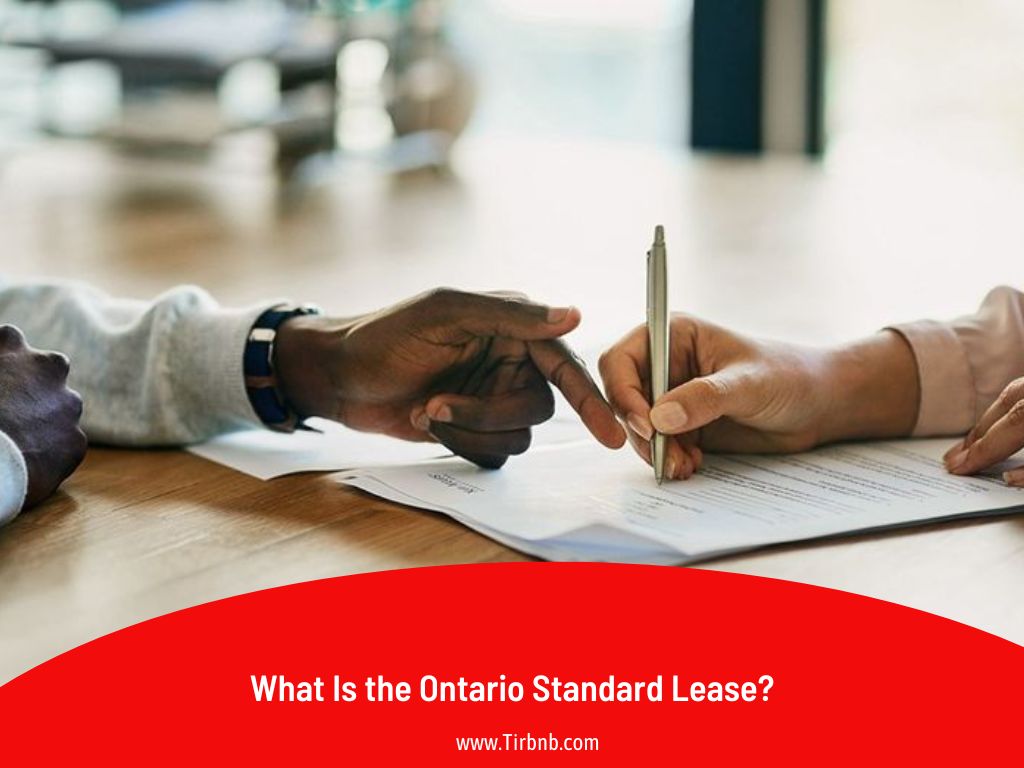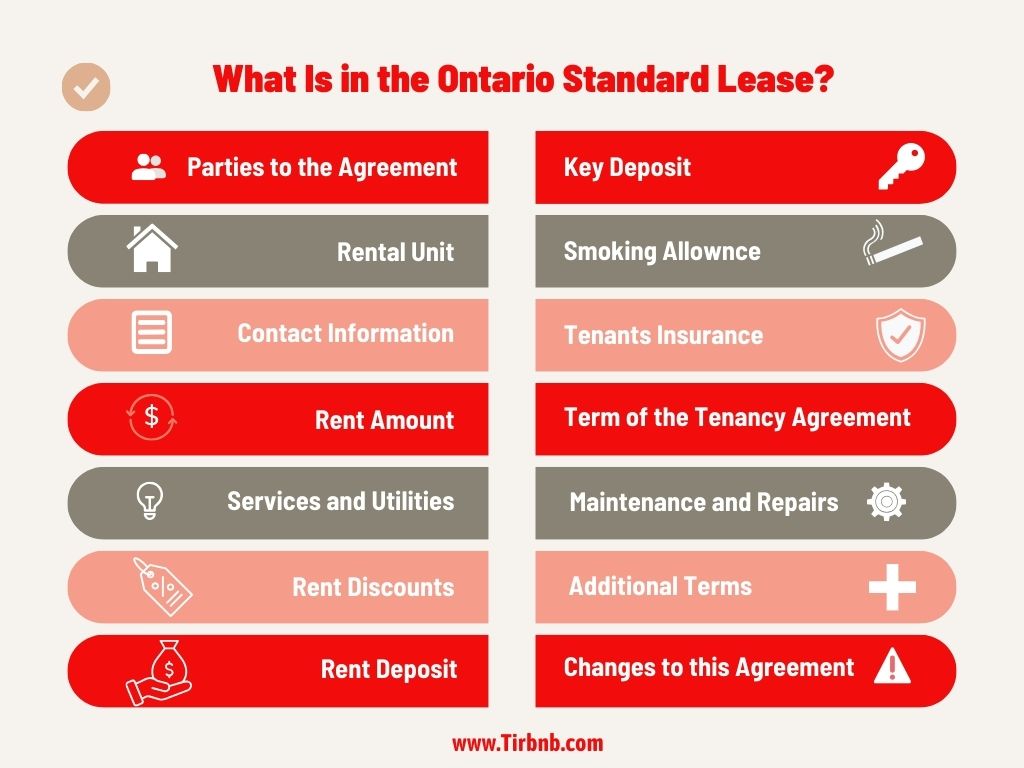Ontario Standard Lease: Your Guide for Rental Agreements in 2024
Anyone who wants to rent a house in Toronto needs to know about the rules and regulations that come with rental agreement. As part of its legislative change of the Residential Tenancy Laws, the Ontario government has passed a law requesting all rentals to be in a Standard Form Lease Agreement (“Ontario Standard Lease”). It’s required for both the tenant and the landlord.
The Ontario standard lease establishes a deal between the property owner and the renter when it is complete. Luckily, the conditions of this new agreement are not retroactive and do not negate OREA or other forms of lease automatically, but there are implications to be mindful of.
Let’s learn more about Ontario standard lease.
What Is the Ontario Standard Lease?

First, let’s explain more about this lease. The Ontario Standard Lease is a crucial legal document that governs the terms of residential lease agreements in the province of Ontario, Canada. Introduced to simplify and standardize the leasing process, this mandatory lease form outlines the rights and responsibilities of both landlords and tenants.
It covers essential details such as rent amount, terms of occupancy, and rules regarding the use of the rental property. Understanding the Ontario Standard Lease is vital for both landlords and tenants to ensure clarity and compliance with provincial rental regulations.
What is in the standard lease
The Ontario standard lease has almost 15 section that we just mention them in this article and if you want to know more information about these sections, click here.

- Parties to the Agreement: Identification of the landlord(s) and tenant(s) involved in the agreement.
- Rental Unit: Description of the leased property, including the address and any specific details about the unit.
- Contact Information: the two parties in this agreement should leave their contact information, including their phone number and email address, for further follow ups.
- Term of the Tenancy Agreement: Details about the duration of the lease, including the start date and the conditions for renewal or termination.
- Rent: The amount of money that the tenant should pay per month.
- Services and Utilities: Depending on the terms of the lease agreement, the renter or the landlord may be responsible for paying for some or all of the services and utilities.
- Rent Discounts: If there is any discount on the rent, it should be mentioned in the Ontario residential tenancy agreement.
- Rent Deposit: The tenant should give an amount of money to the landlord as a deposit. It is mentioned in the rental agreement and is usually equal to one month’s rent, but it may vary depending on the location and the agreement between the parties.
- Key Deposit: This is the money you pay to receive the home key and it will be returned to you at the end of the rental agreement in case the key isn’t harmed or damaged.
- Smoking: It is mentioned in the rental agreement whether you can smoke in the apartment.
- Tenants Insurance: This insurance protects the tenant from financial losses in case of theft, fire, water damage, or other perils that affect their belongings or cause them to temporarily move out of the rental unit.
- Maintenance and Repairs: If the rental requires any repairs, it is mentioned in the lease to ensure the owner proceed with it.
- Additional Terms: Inclusion of any additional terms or conditions agreed upon by both parties, such as pet policies, parking arrangements, or maintenance responsibilities.
- Changes to this Agreement: You and your landlord can agree to end your rental agreement early. Therefore, if you want to stay in a short-term rental in Toronto, you should consider to change the duration of the agreement, which is normally one year.
- Signatures.
Is the Ontario Standard Lease Changeable?
You cannot change any section of the standard lease, and it must print with all elements. But according to section 15, you can add valid and enforceable terms. These must be explicit and transparent in the language. For example, you can add terms about smoking prohibition, the number of occupants, having pets and other similar conditions.
Speaking of the pets, if you have a fluffy friend who is going to stay with you during your stay, you should search for pet-friendly hotels in Ontario because it is not allowed to bring pet in all apartments.
Why Landlords Must Be Aware of the Ontario Standard Lease?
This needs only the most essential tenant details and most of the information in the paper is about “tenant rights” and how tenants should secure themselves. But there is a hole in this agreement when it comes to the protection of the landlord. The lack of clarity needed leaves landlords wide-open to many issues during and after a rental agreement.
Actually, the Ontario standard lease is all about renters and doesn’t show any concern about landlords. But somehow, landlords can protect themselves from feature problems. The solution is in section 15 “Additional terms”. According to this section, landlords and their tenants are allowed to agree on items in an “attached form”.
It is necessary for new landlords to know, that you can not attach terms that do not obey the Residential Tenancies Act. For example, these conditions are allowed to be in the lease:
- Request a deposit of damage
- Late rent financial punishments
- Controlling the rental visitors
- Making tenants leave at a particular time
- forcing tenants to be responsible for maintenance
In addition, if you’re searching for some of Toronto’s best-furnished apartments to stay and see the entire city, you can check them here.
Bottom Line
A standard lease is a residential tenancy agreement that is required for most private rental units in Ontario. It is a legal document that defines the rights and responsibilities of landlords and tenants, and contains information such as the rental unit, the rent amount, the term of the lease, and the rules of the rental property. The Ontario Standard Lease was introduced in 2018 to make renting easier and fairer for both landlords and tenants, and to reduce disputes and misunderstandings.
FAQs
Yes, the Ontario Standard Lease is mandatory for most residential leases in Ontario. It is to make it easier for landlords and tenants to understand their rights and responsibilities, as well as to help prevent misunderstandings and disputes.
Failure to use the Ontario Standard Lease for rental agreements in Ontario could have legal implications. It is especially essential for landlords to write an agreement based on Ontario standard lease rules and regulations. If the landlord fails to provide the standard lease form within 21 days of receiving the request, the tenant can give notice to terminate the tenancy early, or even apply to the Landlord and Tenant Board for compensation equal to one month’s rent.


